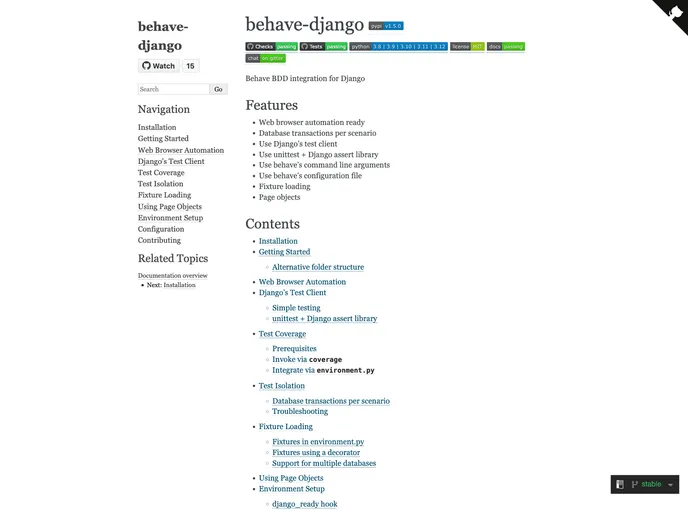Behave Django

Behave BDD integration for Django
## Overview
Behave Django offers a seamless integration of Behavior-Driven Development (BDD) into Django projects, enhancing the testing process by allowing developers to write tests in a natural language format. This innovative framework is designed to make collaboration between developers and non-developers easier, accelerating the development lifecycle while ensuring that the software meets business requirements.
With its user-friendly approach, Behave Django enables developers to define behaviors in simple terms, which are then mapped to code. This not only improves communication among team members but also facilitates a more structured testing methodology that is essential for modern web applications.
## Features
- **Natural Language Syntax**: Write tests using Gherkin language, making it easy for non-technical stakeholders to understand the requirements and scenarios.
- **Django Integration**: Works seamlessly with Django's architecture, allowing for a smoother testing experience without disrupting existing workflows.
- **Step Definitions**: Customizable step definitions let you create reusable code snippets for common behaviors, reducing redundancy and improving maintainability.
- **Automatic Test Discovery**: Automatically detects and runs tests, streamlining the testing process and saving time during development cycles.
- **Support for Fixtures**: Allows for the use of Django fixtures, ensuring that your test environments are set up with the necessary data, leading to more reliable tests.
- **Rich Documentation**: Comes with extensive documentation and examples, making it easy for both new and experienced developers to get started.
- **Community Support**: A growing community of users and contributors that share insights, extensions, and solutions to common problems.
With these robust features, Behave Django is a compelling choice for any Django-based project looking to implement BDD effectively.

- Django
Django is a high-level Python web framework that encourages rapid development and clean, pragmatic design. It follows the model-view-controller (MVC) architectural pattern, providing an extensive set of built-in tools and conventions to streamline the creation of robust and scalable web applications.